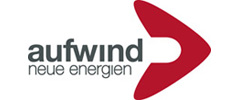Chemicals management may be getting tougher
The effects of Canada’s assessment of chemicals and the new European chemicals law are likely to reverberate through the international market.
02.11.2006 |Helen Lynn
Canada is poised to release an assessment of 23,000 chemicals, making it the first country in the world to systematically review all of the chemicals in current use within its borders. Coupled with the impending adoption of a new chemicals policy in Europe, the Canadian action could change the mix of products on store shelves worldwide, experts say.
Rhonda Saunders
Canada’s list of 4000 suspect chemicals includes bisphenol A, used in pacifiers; di(2-ethylhexyl)phthalate (DEHP), found in perfumes and hairsprays; cyclotetrasiloxane, common in lip balms and conditioners; and toluene, a solvent used in cleaning products.
In 1986, rules in Canada mandated that all newly introduced substances undergo toxicity screening. At the time, 23,000 chemicals already on the Canadian market were “grandfathered” in without proof of their safety.
Now, after 7 years of study, Environment Canada and Health Canada officials have combed through all 23,000 substances. They flagged 4000 that are toxic and either persistent or bioaccumulative or that present the greatest potential for human exposure. Of these, 400 were found to be persistent, bioaccumulative, and toxic (PBT) chemicals, a combination that calls for immediate action, says Fe de Leon, a researcher with the Canadian Environmental Law Association .
Although the list was submitted to the ministers of environment and health in September, it won’t be made public until the end of the year, says Steve Clarkson, director of the Bureau of Risk and Impact Assessment at Health Canada. The government will conduct another screening process for the 4000 chemicals, based on the scientific literature and other existing data to determine whether they need to be managed. Clarkson predicts that it will take 10–15 years to get through all of them.
In Europe, an even slower pace of risk assessments–5 years for only 150 substances–led in part to the EU’s proposed chemicals law, Registration, Evaluation, and Authorisation of Chemicals (REACH), says Rob Donkers, an environment counselor with the European Commission’s delegation to the U.S. Instead of the government taking responsibility for proving that a chemical is “unsafe to handle”, which is the practice in the U.S. and Canada, draft [mmm] REACH legislation puts the onus on industry to prove that products are safe.
Expected to be adopted by the end of this year, REACH will require companies to register roughly 30,000 high-production-volume chemicals. Companies will have to seek authorization to use the more than 1500 chemicals that are either PBT or cause cancer, genetic mutations, or birth defects, Donkers says. “This information from Canada is very important because that will enable us to quickly establish a list in Europe for these 1500–2000 chemicals,” he says.
REACH was further strengthened on October 10, when the European Parliament’s environmental committee approved new rules compelling chemical producers to replace dangerous chemicals with safer alternatives when those alternatives exist.
The establishment of a list of 4000 suspect chemicals in Canada has already raised doubts for industry over the continued use of some of the substances, de Leon notes. Even before a chemical is listed as being of concern, simply the fact that information is requested about it could cause manufacturers to decide that sales in Canada are not worth the trouble, says Karen Levins, vice president of the chemicals group at Cantox Health Sciences International. However, environmentalists fear that little will change unless the government sets aggressive timelines for further assessment of the chemicals and takes steps to ban or eliminate PBT substances, de Leon says.
The measures taken by Canada and the EU should be adopted by the U.S., says Mike Wilson , an environmental health scientist at the University of California, Berkeley. California is getting ahead of the U.S. EPA by crafting a comprehensive chemicals policy . In a report commissioned by the California legislature, Wilson found that the Toxic Substances Control Act (TSCA) is at the root of flaws in the regulation of the U.S. chemical market.
Wilson’s critique was echoed in testimony from the U.S. Government Accountability Office (GAO) at an August 2 Senate oversight hearing on TSCA. EPA hasn’t adequately screened chemicals, because the burden of obtaining data is on EPA rather than on chemical companies, said John B. Stephenson, the director of natural resources and environment at GAO. – JANET PELLEY
Source
Helen Lynn
Campaigns and Health Co-ordinator
Women's Environmental Network
PO Box 30626
London E1 1TZ

































